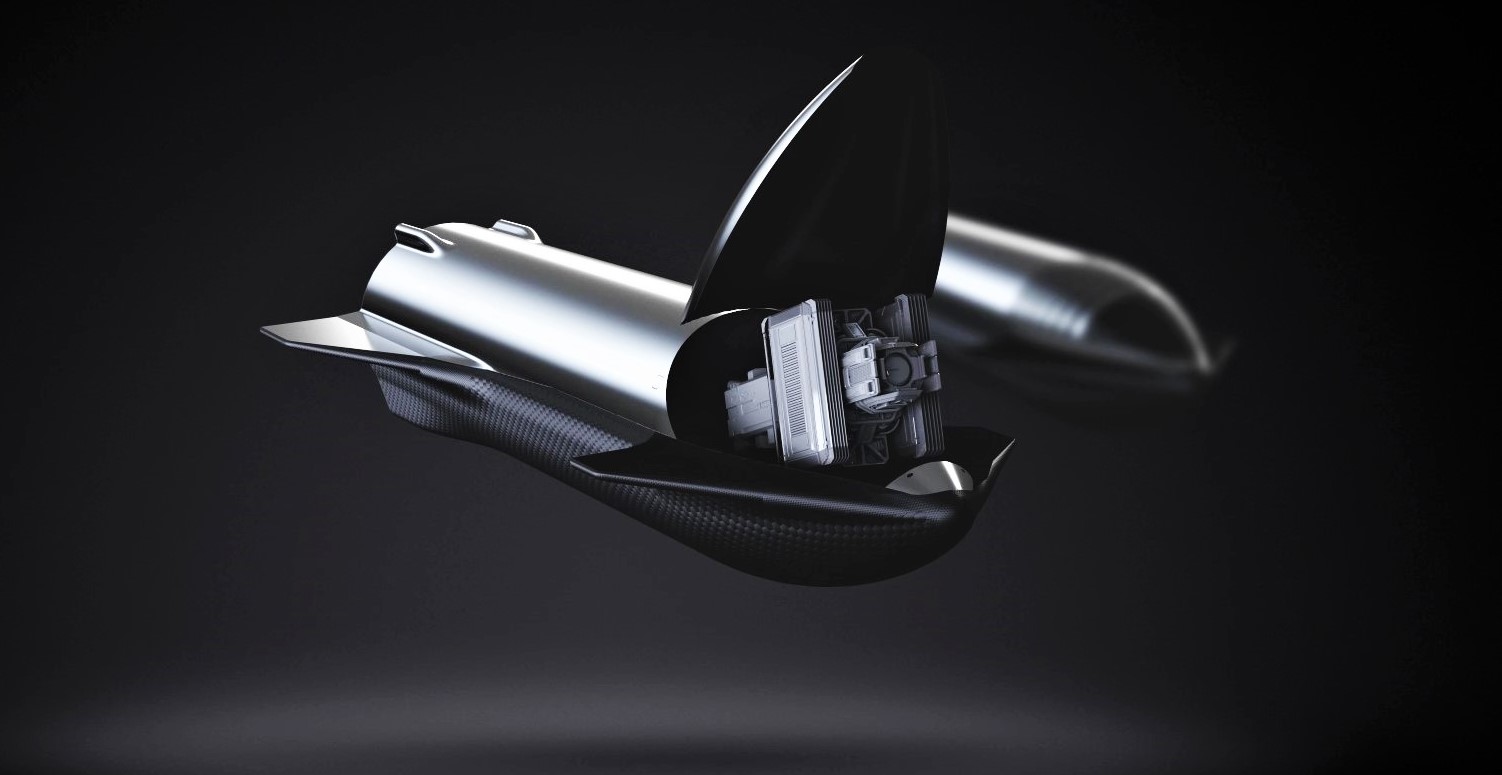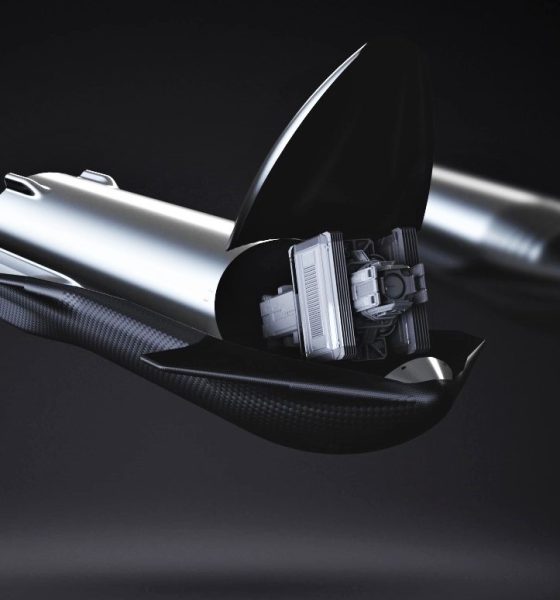SpaceX CEO Elon Musk has reiterated plans for Starship to take over Starlink launches, eventually fully replacing Falcon 9’s role in the constellation.
Since dedicated Starlink launches began in May 2019, Musk, COO and President Gwynne Shotwell, and a few other SpaceX officials and executives have made it clear that the company would ultimately transition the task of launching and maintaining the Starlink constellation from Falcon 9 to Starship. Barring major surprises, Starship is being designed to be fully and rapidly reusable from the ground up, nominally making the system far cheaper to launch.
After Musk announced a radical redesign that replaced carbon composite structures with simple steel, Starship may even be far cheaper to build than Falcon 9 or Falcon Heavy – despite being several times larger, heavier, more powerful, and more capable. Despite its relative shortcomings, though, Falcon 9 has become an extraordinarily reliable and available workhorse for SpaceX and has completed 28 operational Starlink launches – delivering ~1670 satellites to orbit – since November 2019.
However, while Falcon 9 has done and continues to do an extraordinary job of routinely launching satellites and astronauts, Starship promises to blow it out of the water. It might be several years before Starship is deemed safe and reliable enough to launch humans but SpaceX could feasibly start launching Starlink satellites on the rocket almost as soon as it begins orbital flight tests.
Thanks to the low cost of each Starlink satellite, likely now around ~$250,000, it would be surprising if SpaceX didn’t include at least a few dozen satellites in the early phases of orbital Starship flight tests – even if success is far from guaranteed. At some point, though, and perhaps quite quickly, Starship will safely make it to orbit, reenter, and touch down beside a Super Heavy booster a few times in a row, effectively demonstrating fitness to launch (uncrewed) payloads.
It could take a bit more proof to convince paying customers with satellites worth tens to hundreds of millions of dollars to entrust launch contracts to Starship but SpaceX itself – likely to be the builder and owner of the world’s largest satellite constellation for the indefinite future – has more flexibility to tailor its appetite for caution. With the capabilities Starship could feasibly offer, SpaceX might also be hard-pressed to just sit and wait.
Speaking at a conference in October 2019, Gwynne Shotwell revealed that a single Starship would be able to launch up to 400 Starlink satellites (~106,000 kg/230,000 lb) at a time – equivalent to more than six and a half dedicated Falcon 9 missions. Unofficial renders imagining the payload have made it clear that more than 300 satellites could fit inside Starship’s truly cavernous fairing with ease.
Simply put, even if early Starship launches somehow end up being five times more costly than a partially expendable Falcon 9 (i.e. >$75M), the per-satellite launch cost of Starlink missions would be no worse than Falcon while simultaneously delivering several times more satellites to orbit. In reality, unless SpaceX has to expend an entire ship, booster, and ~35 Raptor engines, the total cost of a Starship launch could already be cheaper than Falcon 9 even before factoring in the cost per Starlink satellite.
Even with a downright tranquil monthly launch cadence, a year of 300-satellite Starlink mission on Starship would more than double what Falcon 9 has managed with 28 launches in the last ~20 months. SpaceX is unlikely to be ready to support truly operational Starship Starlink launches or risk ~$75-100 million of satellites until sometime next year but it’s safe to say that the wait will be worth it.

News
Tesla (TSLA) receives “Buy” rating and $551 PT from Canaccord Genuity
He also maintained a “Buy” rating for TSLA stock over the company’s improving long-term outlook, which is driven by autonomy and robotics.

Canaccord Genuity analyst George Gianarikas raised his Tesla (NASDAQ:TSLA) price target from $482 to $551. He also maintained a “Buy” rating for TSLA stock over the company’s improving long-term outlook, which is driven by autonomy and robotics.
The analyst’s updated note
Gianarikas lowered his 4Q25 delivery estimates but pointed to several positive factors in the Tesla story. He noted that EV adoption in emerging markets is gaining pace, and progress in FSD and the Robotaxi rollout in 2026 represent major upside drivers. Further progress in the Optimus program next year could also add more momentum for the electric vehicle maker.
“Overall, yes, 4Q25 delivery expectations are being revised lower. However, the reset in the US EV market is laying the groundwork for a more durable and attractive long-term demand environment.
“At the same time, EV penetration in emerging markets is accelerating, reinforcing Tesla’s potential multi‑year growth runway beyond the US. Global progress in FSD and the anticipated rollout of a larger robotaxi fleet in 2026 are increasingly important components of the Tesla equity story and could provide sentiment tailwinds,” the analyst wrote.
Tesla’s busy 2026
The upcoming year would be a busy one for Tesla, considering the company’s plans and targets. The autonomous two-seat Cybercab has been confirmed to start production sometime in Q2 2026, as per Elon Musk during the 2025 Annual Shareholder Meeting.
Apart from this, Tesla is also expected to unveil the next-generation Roadster on April 1, 2026. Tesla is also expected to start high-volume production of the Tesla Semi in Nevada next year.
Apart from vehicle launches, Tesla has expressed its intentions to significantly ramp the rollout of FSD to several regions worldwide, such as Europe. Plans are also underway to launch more Robotaxi networks in several more key areas across the United States.
News
Waymo sues Santa Monica over order to halt overnight charging sessions
In its complaint, Waymo argued that its self-driving cars’ operations do not constitute a public nuisance, and compliance with the city’s order would cause the company irreparable harm.

Waymo has filed a lawsuit against the City of Santa Monica in Los Angeles County Superior Court, seeking to block an order that requires the company to cease overnight charging at two facilities.
In its complaint, Waymo argued that its self-driving cars’ operations do not constitute a public nuisance, and compliance with the city’s order would cause the company irreparable harm.
Nuisance claims
As noted in a report from the Los Angeles Times, Waymo’s two charging sites at Euclid Street and Broadway have operated for about a year, supporting the company’s growing fleet with round-the-clock activity. Unfortunately, this has also resulted in residents in the area reportedly being unable to sleep due to incessant beeping from self-driving taxis that are moving in and out of the charging stations around the clock.
Frustrated residents have protested against the Waymos by blocking the vehicles’ paths, placing cones, and “stacking” cars to create backups. This has also resulted in multiple calls to the police.
Last month, the city issued an order to Waymo and its charging partner, Voltera, to cease overnight operations at the charging locations, stating that the self-driving vehicles’ activities at night were a public nuisance. A December 15 meeting yielded no agreement on mitigations like software rerouting. Waymo proposed changes, but the city reportedly insisted that nothing would satisfy the irate residents.
“We are disappointed that the City has chosen an adversarial path over a collaborative one. The City’s position has been to insist that no actions taken or proposed by Waymo would satisfy the complaining neighbors and therefore must be deemed insufficient,” a Waymo spokesperson stated.
Waymo pushes back
In its legal complaint, Waymo stated that its “activities at the Broadway Facilities do not constitute a public nuisance.” The company also noted that it “faces imminent and irreparable harm to its operations, employees, and customers” from the city’s order. The suit also stated that the city was fully aware that the Voltera charging sites would be operating around the clock to support Waymo’s self-driving taxis.
The company highlighted over one million trips in Santa Monica since launch, with more than 50,000 rides starting or ending there in November alone. Waymo also criticized the city for adopting a contentious strategy against businesses.
“The City of Santa Monica’s recent actions are inconsistent with its stated goal of attracting investment. At a time when the City faces a serious fiscal crisis, officials are choosing to obstruct properly permitted investment rather than fostering a ‘ready for business’ environment,” Waymo stated.
News
Tesla FSD v14.2.2 is getting rave reviews from drivers
So far, early testers have reported buttery-smooth drives with confident performance, even at night or on twisty roads.

Tesla Full Self-Driving (Supervised) v14.2.2 is receiving positive reviews from owners, with several drivers praising the build’s lack of hesitation during lane changes and its smoother decision-making, among others.
The update, which started rolling out on Monday, also adds features like dynamic arrival pin adjustment. So far, early testers have reported buttery-smooth drives with confident performance, even at night or on twisty roads.
Owners highlight major improvements
Longtime Tesla owner and FSD user @BLKMDL3 shared a detailed 10-hour impression of FSD v14.2.2, noting that the system exhibited “zero lane change hesitation” and “extremely refined” lane choices. He praised Mad Max mode’s performance, stellar parking in locations including ticket dispensers, and impressive canyon runs even in dark conditions.
Fellow FSD user Dan Burkland reported an hour of FSD v14.2.2’s nighttime driving with “zero hesitations” and “buttery smooth” confidence reminiscent of Robotaxi rides in areas such as Austin, Texas. Veteran FSD user Whole Mars Catalog also demonstrated voice navigation via Grok, while Tesla owner Devin Olsen completed a nearly two-hour drive with FSD v14.2.2 in heavy traffic and rain with strong performance.
Closer to unsupervised
FSD has been receiving rave reviews, even from Tesla’s competitors. Xpeng CEO He Xiaopeng, for one, offered fresh praise for FSD v14.2 after visiting Silicon Valley. Following extended test drives of Tesla vehicles running the latest FSD software, He stated that the system has made major strides, reinforcing his view that Tesla’s approach to autonomy is indeed the proper path towards autonomy.
According to He, Tesla’s FSD has evolved from a smooth Level 2 advanced driver assistance system into what he described as a “near-Level 4” experience in terms of capabilities. While acknowledging that areas of improvement are still present, the Xpeng CEO stated that FSD’s current iteration significantly surpasses last year’s capabilities. He also reiterated his belief that Tesla’s strategy of using the same autonomous software and hardware architecture across private vehicles and robotaxis is the right long-term approach, as it would allow users to bypass intermediate autonomy stages and move closer to Level 4 functionality.










